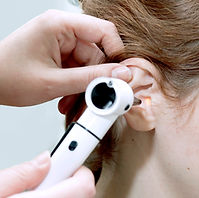
Sense of Touch: We Touch With Our Skin

This lesson contains affiliate links to products I have used and personally recommend. At no cost to you, I make a commission for purchases made through the links or advertisements. These commissions help to pay for the costs of the site and enable it to remain free for anyone who wants to use it.
Objective:
-
Students will demonstrate that the skin is responsible for the intake of information that we process through our sense of touch.
Question that encompasses the objective:
How could our skin help us find our way in the dark?
Prepare the Learner: Activating Prior Knowledge.
How will students prior knowledge be activated?
Warm up by asking students:
-
Ask students share things that they have touched that are cold, hot, sharp, smooth, rough, etc.
Materials and Free Resources to Download for this Lesson:
-
YouTube Video, "First Knowledge - Our Senses: Touch" by Eleftherios Katsaros
-
Two thermoses or insulated coffee mugs, one with hot water, one with cold water
-
One wool mitten per student pair
-
One blindfold per student pair
-
Two wooden toothpicks per student pair, one complete, one with a tip broke off
-
One “sticky” note or sticker per student pair
-
Two cups of water per student pair, one at room temperature and one cold, i.e. directly from the fridge or water cooler
-
One copy per student, We Touch With Our Skin Worksheet
Input:
What is the most important content in this lesson?
To reach this lesson’s objective, students need to understand:
-
Touch is the primary sense involved in receiving and processing information about how things feel.
-
The skin is responsible for the intake of information processed as sense of touch.
-
Touch serves many purposes in the real world.
How will the learning of this content be facilitated?
-
In this lesson, students will be initially engaged by viewing a YouTube video on the Sense of Touch. Students will learn and discuss that the surface of our skin, especially our hands, informs our sense of touch, which tells us about temperature, shape and how something feels (texture).
-
In the next part of the activity, students will work in pairs to prove that the skin intakes information processed by the sense of touch. Students will participate in an experiment where sense of touch is impaired by a wool mitten preventing them from distinguishing between temperature, shape, and texture. Students will then use their bare hands to examine the same objects and will be able to feel the differences in temperature, shape, and texture.
-
Next, students will consider and discuss how our entire body intakes information processed by sense of touch. Students will complete a worksheet independently to demonstrate their understanding. The worksheet requires students to examine sets of pictures involving touch and determine which picture depicts a stronger sense of touch, i.e. touch involving direct skin.
-
Finally, the students will answer a written independent assessment question that requires students to apply their understanding of the objective by examining it in the context of a real world experience, Our skin helps us find our way in the dark, explain.
Time/Application
3-5 minutes
Guided Introduction
-
Guided Mini-Lesson: YouTube Video, Sense of Touch (10 minutes)
-
Activity Part 1: Mitten Mania (30 minutes)
-
Activity Part 2: We Touch With Our Skin Worksheet (10 minutes)
-
Independent Assessment (10 minutes)
10 minutes
Guided Mini-Lesson: YouTube Video, Sense of Touch
-
Inform students they watching a video about the sense of touch.
-
Play the video, YouTube, "Sense of Touch".
-
Ask students, According to the video, what part of our body is responsible for the intake of information related to touch? Answer: The surface of our skin, especially our hands, takes in this information.
-
Ask students, What can our skin tell us about items in our environment? Answers: Our skin informs our sense of touch, which tells us about temperature, shape and how something feels (texture).
-
Ask students to recall some of the adjectives used in the video to describe touch and list these on the board. Answers: hot, cold, lukewarm, frozen, soft, smooth, rough, sharp, hard
-
Ask students to provide an example of an item that feels like each of these adjectives. For example, a cup of coffee feels hot to touch, a snowball feels cold to touch, etc.
-
Display for students the two thermoses, ask the students to tell you which one is hot and which one is cold by looking at them. Students will indicate this is impossible.
-
Ask students why. Answers should indicate because temperature is determined by sense of touch and therefore requires contact with skin.
-
Invite a student volunteer touch each thermoses and share which is hot and which is cold with the class.
-
Ask another student to explain how the volunteer used his/her skin to make this determination. Answers should indicate that the volunteer had to touch the thermoses with his/her skin in order to determine which was hot and which was cold.
30 Minutes
Activity Part 1: Mitten Mania
-
Inform students that they are going to work in pairs to prove that is our skin intakes information processed by our sense of touch.
-
Divide students into groups of 2 and give each student pair one cup of cold water and one cup of room temperature water. Instruct students to not touch either of the cups at this time.
-
Ask one student from each pair to put on the mitten.
-
Ask the student with the mitten to touch the two cups and determine which one has the colder water. It is expected that they will not be able to tell because the mitten will prevent the students from sensing the slight difference in temperature.
-
Ask students to switch the mitten and allow his/her partner to try.
-
Now ask students to try touching the cups without the mitten to determine which one contains the colder water. It is expected they will be able to determine which cup contains the colder water.
-
Ask student pairs to share their findings with the class. Answers should imply that with the mitten it was difficult to feel the difference in temperature, but with their bare hands they were able to determine the difference.
-
Give each student pair a sticky note and a blindfold.
-
Ask one student to put on the blindfold and the mitten.
-
Then ask the other student to place the sticky note somewhere on the desk in front of his/her partner.
-
Ask the student with the mitten and blindfold on to touch desk all over with a patting motion and feel the sticky note. Instruct students to not run their hands or slide their hands across the desk, but to pick up his/her palm each time. It is expected that they will not be able to find the sticky note because the mitten will prevent the students from sensing the different texture.
-
Ask student pairs to switch the mitten and the blindfold and to place the sticky note in a different spot to allow the other partner a turn to try to feel the sticky note.
-
Now ask students to try the same thing without the mitten, but with the blindfold. It is expected they will be able to feel the sticky note.
-
Ask student pairs to share their findings with the class. Answers should indicate that the mitten prevented them from feeling the sticky note, but they were able to feel it with their bare hands.
-
Give each student pair two toothpicks, one complete and one with the tip broken off.
-
Ask one student to put on the blindfold and the mitten.
-
Then ask the other student to place the toothpicks in front of his/her partner.
-
Ask the student with the mitten to pick up the broken toothpick. Instruct the partner without the blindfold to switch around the toothpicks and repeat a few times. It is expected that the mitten will prevent the students from being able to feel the broken tip.
-
Ask student pairs to switch the mitten and the blindfold to allow the other partner a turn.
-
Now ask students to try the same thing without the mitten, but with the blindfold. It is expected that they will be able to feel the broken tip.
-
Ask student pairs to share their findings with the class. Answers should indicate that the mitten prevented them from feeling the broken tip, but they were able to feel it with their bare hands.
-
Write the following questions on the board and ask students to discuss and answer with their partners.
-
How does this experiment prove that your skin intakes information processed by your sense of touch? Answer: When my skin was covered with the mitten I could not feel the temperature of the water, the texture of the sticky note, or the shape of the toothpick, even though I was touching them. I needed to touch the items with my bare skin in order to feel the differences in the items.
10 Minutes
Activity Part 2: We Touch With Our Skin Worksheet
-
Write the following questions on the board and ask students to share think about and share their answers with the class, Are your hands the only part of your body covered with skin? Are your hands the only part of your body to intake information processed by your sense of touch? Answers should indicate that the entire body is covered with skin and therefore intakes information processed by sense of touch. If guiding questions are needed ask students to consider how it feels to walk barefoot on gravel or how their face feels when they walk into the wind.
-
Distribute the worksheet to each student, read the directions aloud and ask students to complete independently.
Closure/Assessment
10 minutes
-
How could our skin help us find our way in the dark? Use what you have learned about skin today to come up with some different ways you could use your skin to get around without being able to see. In complete sentences, describe at least three different scenarios where using your skin could help you and explain your reasoning.
-
Possible Answers: When we need to find our way in the dark we use our skin to feel objects that will guide our path, as well as obstacles in our path. For example, you might run your hand along a wall to help you find your way, or you may stub your toe on a piece of furniture. Each time your skin feels something it is processed by your sense of touch to tell you what it is you are feeling, you then make a decision on what way to go based on what you are feeling in your path. Answers will vary.
Individualized Instruction/Scaffolding
English Language Learners/Students with IEPS will be supported in this lesson through written repetition of new vocabulary words, and multiple representation of vocabulary words through printed images. In addition, scaffolds such as sentence starters and note-taking graphic organizers should be implemented at the teacher’s discretion.













